
table of contents
- What exactly is a ball tree?
- Easy-care varieties
- The classics
- Other round growing trees
- Refined spherical trees
- Trees that are compatible with pruning
Trees have always been one of the most impressive design elements in many ornamental gardens. A tree becomes even more impressive when its crown comes as close as possible to a real sphere. Even if the shape is sometimes created artificially and thus can be more or less clearly imposed on almost every tree, some varieties are naturally much closer to this ideal than others. Easy-care varieties, as we present them below, prove to be special due to their growth characteristics Easy-care plants, they can be kept permanently as a spherical tree with comparatively little effort in terms of pruning and care permit.
What exactly is a ball tree?
The concept of the spherical tree falls in connection with Garden design and also parks again and again. But how exactly is a spherical tree defined? Because, unlike with technical issues, there is no absolutely undisputed and sharply delineated definition. Nevertheless, two types of spherical tree can be clearly distinguished:
1. The natural ball tree - It naturally has a growth form that is strongly attached to the sphere. In addition, a mostly dense, flat growth enhances the spatial impression of the crown shape.
2. The artificial ball tree - This is a tree, the crown of which is consciously formed into a mostly almost perfect ball through targeted pruning measures. Suitable tree species can be found in the garden in the form of strongly branching, particularly dense ones growing species that maintain the given shape and also for a particularly impressive look condense.
Most spherical trees, which are straight but easy to care for, usually have both characteristics. On the one hand, they already have a uniform, spherical crown due to their natural growth. In addition, they can also be easily cut into shape if necessary and offer good quality thanks to a particularly dense crown Prerequisites for abstracting the natural shape again in a targeted manner and thus the perfect symbiosis of nature and geometry to accomplish.
Note: Although the absolute height initially has nothing to do with the spherical shape, it is noticeable that especially small tree species in spherical shape are grown or cut into spherical trees. One of the main reasons for this is that the branches and twigs of large trees are further apart. The greater the distance between them, the more difficult it is to perceive the spherical shape due to the gaps that arise.
Easy-care varieties
These types of trees are particularly suitable for creating a perfect spherical tree in your own garden with little effort:
The classics
If one considers the public space as the most common place of application of typical spherical trees, it is noticeable that the traditionally used trees are limited to a few species. Their use is based not least on their high level of insensitivity and the low maintenance requirements. They already have a naturally very round crown and only need a slight pruning, if at all.
Globe maple (globosum)
- Height: up to 6 meters
- Growth form: initially clearly round, with increasing age more flat and spherical and weak-growing,
- Other: Crown diameter of 5 to 6 meters, annual increase of about 15 centimeters in height and width
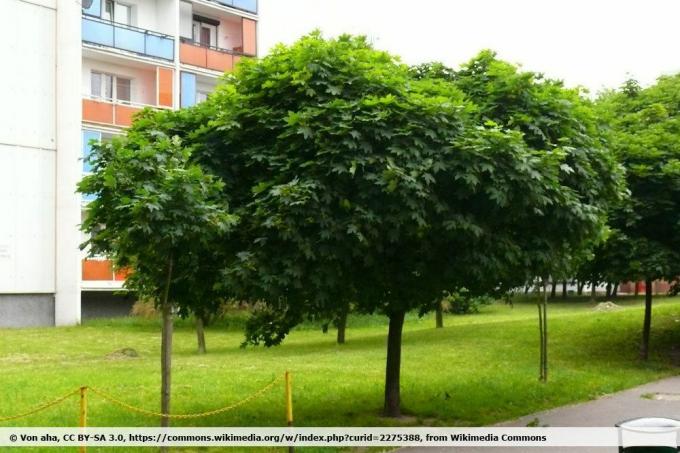
Black Locust (Robinia pseudoacacia Umbraculifera)
Attention: Often also as Ball acacia designated!
- Height: around 5 to 6 meters
- Growth habit: densely branched, opaque crown, almost perfect spherical shape
- Other: very distinctive appearance due to dainty, strongly pinnate leaves with numerous partial leaflets
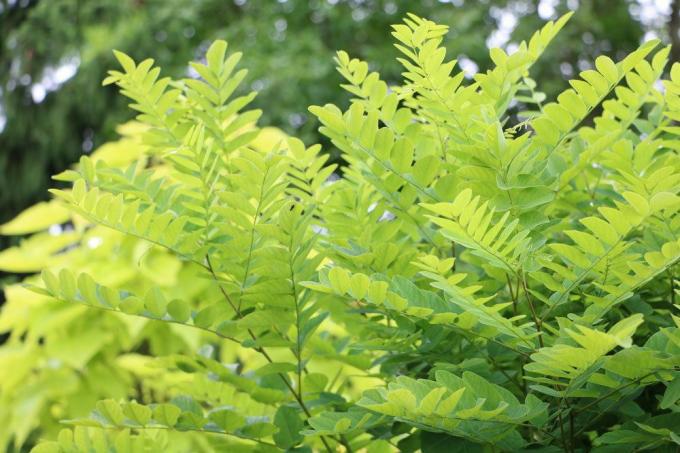
Trumpet Tree (Catalpa bignonioides 'Nana')
- Height: as a spherical shape 4 to 6 meters (compared to "normal" shape with up to 15 meters)
- Growth form: spreading flat ball with overhanging shoots
- Other: annual growth between 20 and 30 centimeters
Other round growing trees
In addition to these widespread species, there are numerous other spherical shapes of different species in tree nurseries, which convince with their very own look, but all are just as easy to care for and naturally rounded in appearance step.
Field maple (Acer campestre compactum)
- Height of growth: shrub-like up to 5 to 7 meters, only rarely up to 10 meters
- Growth form: strongly bushy to spherical, typical high-stemmed tree form can usually only be clearly read through targeted pruning or refinement
- Other: weak growing
Swamp-Oak (Quercus palustris)
- Height: about 3 to 5 meters
- Growth habit: smooth-spherical
- Other: Crown diameter usually between 3 and 4 meters, rarely up to 5 meters, growing very slowly
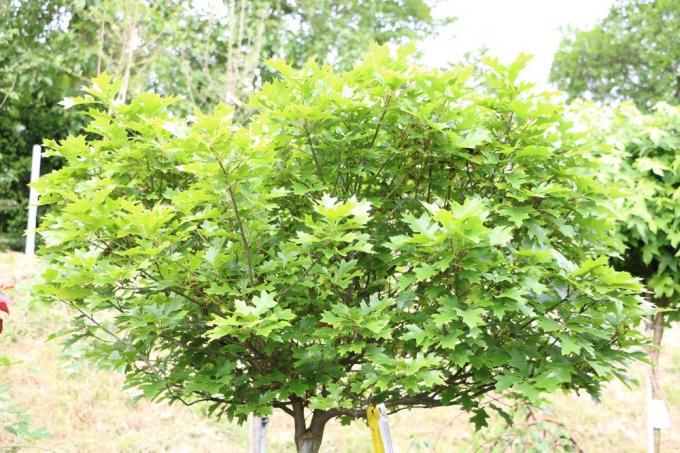
Hawthorn (Crataegus laevigata 'Paul's Scarlet' + Punicea + Punicea Flore Pleno)
- Height: 5 to 7 meters
- Growth habit: initially slender, with age more broad and spherical
- Other: Crown width 3.5 to 5 meters
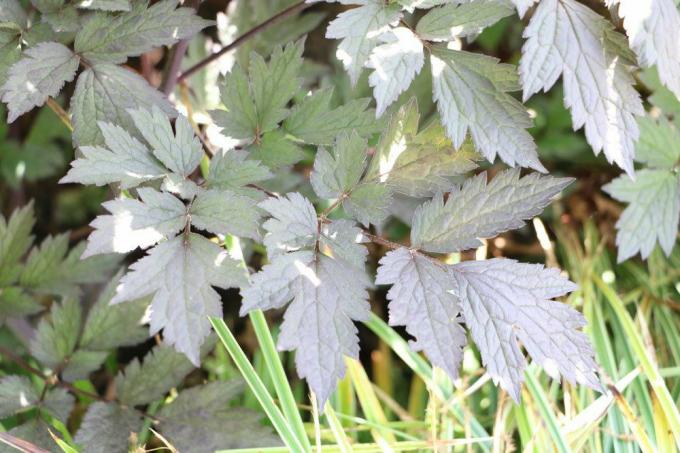
Refined spherical trees
In addition to the real trees, today also Woods used, which are particularly characterized by insensitive properties, but, contrary to a real tree, grow more like a bush. Here, as part of the rearing process by the gardener, there is already a refinement on a long-stemmed plant, so that the bushy, spherical growth of the actual species combined with the tall trunk of a carrier species for an even more appealing appearance will.
Gingko (Biloba Mariken)
- Height: 0.8 to 2 meters
- Growth habit: very compact and dense, initially upright, later clearly more spherical
- Other: for an ideal spherical shape, pruning of emerging shoots is necessary, but often strong odor nuisance due to fermenting or decaying fruits of female trees

Sweet gum (Liquidambar styraciflua "Gum Ball")
- Height: 3 to 5 meters
- Growth form: round and strongly spherical
- Other: Crown diameter up to 4 meters
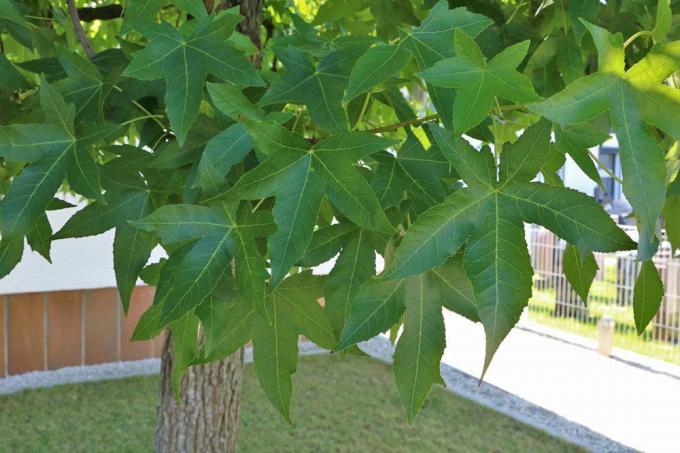
Steppe cherry (Prunus fruticosa Globosa)
Attention: also available as a ball cherry or dwarf cherry!
- Height: up to a maximum of 5 meters when old
- Growth habit: relatively light, slightly branched crown with a distinct spherical shape
- Other: very low demands on soil and surroundings, is considered to be very robust
Trees that are compatible with pruning
In addition to these predominantly natural spherical trees, particularly pruning-compatible tree species can also be specifically cut into the perfect spherical shape. The particularly easy-care species are characterized by their very good tolerance of the shape and the quick closing of cut gaps. With the option of a second shape cut in the late year, they can be shaped well even for beginners, as errors can be compensated for in a short time.
False cypress (Chamaecyparis)
- Height: approx. 2 to 3 meters
- Growth habit: very dense growth, opaque crown
- Other: due to the high sheet density, it can be shaped in almost any way
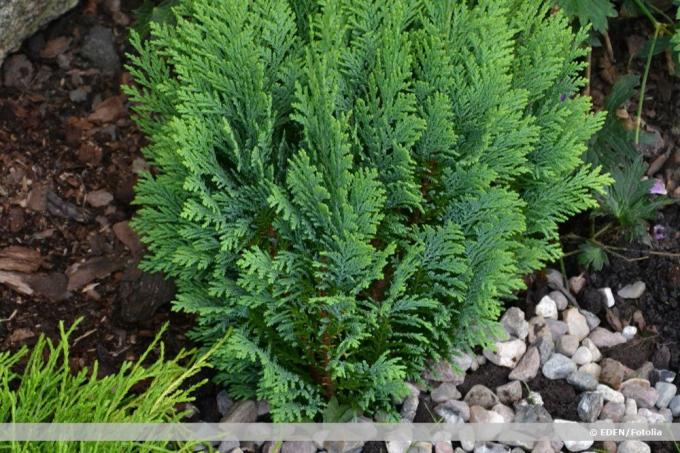
Willow (Salix caprea)
Attention: Also known as kitten willow!
- Height: depending on the location, 5 to 10 meters
- Growth habit: dense and flat-spherical
- Other: Crown width up to a maximum of 7 meters, annual growth of 50 to 70 centimeters


